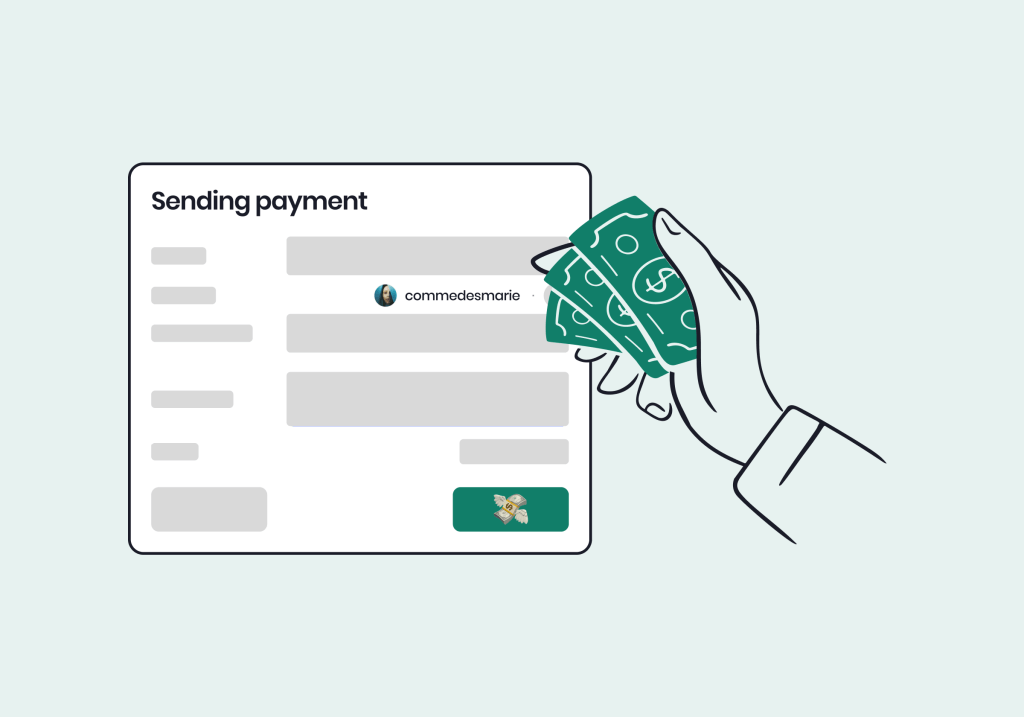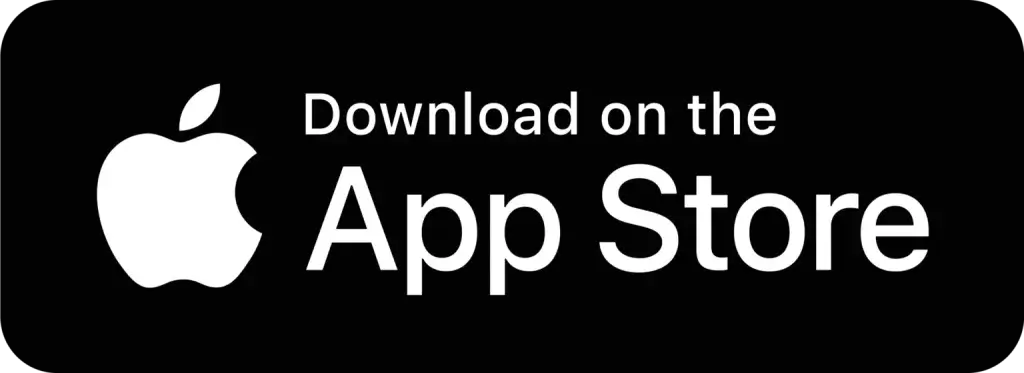
2018 was a difficult year for the entire industry involved in cryptocurrency projects. After drastic declines, which started in January 2018, the market began to verify the validity of companies’ high valuations, and to what extent their value from 2017 was supported not only by a futuristic vision of the world, but also by tangible results in the form of operating products and financial metrics. Key cryptocurrencies of the entire industry, ie ETH and BTC, lost over 80% of their value from all time highs, which translated into even greater decreases in the so-called altcoins or projects directly correlated with ETH and BTC.
indaHash completed the issuance of tokens on December 20th, 2017. The tokens were unblocked on January 23rd, 2018, which meant that they could be transferred and exchanged for other cryptocurrencies by their holders. An important fact is the peak value achieved by Ethereum of $1420 on January 13th, 2018. Since the peak (13.01.2018), the ETH begun to decline, which resulted in a massive devaluation of all projects created on the Ethereum platform with correlated values. In April 2018, ETH fell to a price of around $380, which means a drop of over 70% (from $1420) over a period of about three months.
It is therefore obvious that the issuance and unblocking of IDH tokens took place during the beginning of a gigantic correction of the entire cryptocurrency market. The ETH market cap fell from around $138 billion to around $36 billion in just three months, bringing down 95% of all projects to record lows and correcting their value with a vast majority in over -90% of a slash in their prices. In the unusually speculative environment and overheated market cap of the entire industry, this correction was unstoppable by indaHash or other projects that ended their issue of tokens at the peak of market growth in late 2017.
On top of that, in January 2019, due to the Cryptopia exchange hack, (IDH tokens were listed there) millions of IDH token were stolen by hackers and dumped on the market, heavily influencing the value of the token in a negative way.
After a correction of approximately 12 months (from Jan 2018 to Jan 2019), we are observing the first positive signals of the recovering value of the entire crypto space. Since the lowest market capitalization of the entire crypto market was at the level of approx. $100bn in December 2018, we have been observing an increase to $250bn currently, meaning the market up by 150%. Unfortunately, these increases are largely generated by Bitcoin, and not by Ethereum or altcoins issued on alternative blockchain platforms. A substantial percentage of the projects that were launched in 2017 have already ended their operations and went bankrupt. These were projects that did not have a proven business model, user base or experienced managerial staff. indaHash, as a company registered in 2015, operating internationally for over 4 years, employing over 100 people in many countries around the world and cooperating with the most recognizable brands globally, experienced a different situation in comparison. 2018 was marked by a very dynamic development of the company’s products so as to match its offer to the market’s needs, taking into account the blockchain possibilities and the chances that will come with the end of the adjustment. More about this later in the summary.


At indaHash, we take into consideration several important factors when assessing the performance of our business. The key metrics are related to the application’s usability level (number of published posts), financial results and activity in the development of our product.
When the entire cryptocurrency market was bleeding in 2018, we were focused on expanding our business, growing our influencer and client base around the world.
An important metric worth mentioning is the growth of published posts in the first half of 2019. If we compare 2018 to 2019, we see a 59% increase.
At the same time you can see the total number of users in 2018 was at 655,275 registrations versus 941,998 registrations worldwide after 1h2019. We see an increase of 43% here.
The increase in the number of published posts using the indaHash platform is directly proportional in relation to the company’s revenue growth. In the first half of 2019, the company generated 131% higher revenues compared to the same period in 2018.
The company’s portfolio currently includes the largest and most recognizable brands such as Unilever, Coca-Cola, McDonald’s and many more. This type of cooperation and business experience is unique not only to cryptocurrency market projects, but also to any technology company trying to sell its solutions internationally.


The first half of 2019 has also been very productive for our Product and Technology Department. We believe the best way to see the overall performance is to look into the detailed statistics of how we worked on our source code repository, which is basically where the whole indaHash system resides.
Between January and June 2019, our repository has been committed to 8438 times. This means that our developers have been applying persistent changes to the source code almost 64 times a day! For reference, last year, during the same period, it was 58 commits per day.
Due to the introduction of many new modules, including advanced Brand Dashboard permissions management, Instagram Story campaigns, new post-campaign reports, refined whitelists and many, many more, our repository has also grown in size. indaHash developers have been working on exactly 4159 files this half of the year, so we almost doubled the number of modified files from the first half of 2018, when we were actively committing changes to 2108 files.
The last half of the year has also been a time when quite a lot of refactoring happened, especially at the backend, so a lot of code has been removed and rewritten from scratch in order to introduce new quality to our product portfolio. It’s an inseparable part of technology work to adjust and rewrite our code in order to meet the new business and market requirements, instead of modifying the existing codebase, and this is exactly what’s been happening in 2018 and 2019. Our changes from the first half of 2019 consisted of 328,790 additions to the codebase (added lines of code) and 122,629 deletions (removed lines of code).
All in all, we can confidently summarize the first half of 2019 as very positive, both in terms of the added value to the product business-wise, as well as our development workflow and feature lifecycle, which have been very consistent throughout all those months. With this in mind, we are very much looking forward to the new challenges of the upcoming second half of the year.
Screenshot from indaHash’s continuous integration in works! Deployments, unit tests, builds happening every minute:

Screenshot from beta environment features almost ready to be deployed on 17.07.2019:

Screen of one of our Asana development boards – lots of new features and changes going on concurrently here:


As mentioned before about the first half of 2019, the indaHash dev team performed over 8,400 commits. This resulted in giving many valuable new features to our clients. In a dynamic influencer marketing space, it’s crucial to be up to date and constantly developing better solutions. Here we’ll present a few of them:
- Brand new and rebuilt campaign dashboard for brands and agencies to manage their campaigns

- Brand new campaigns reports, generated automatically in different formats with audience data
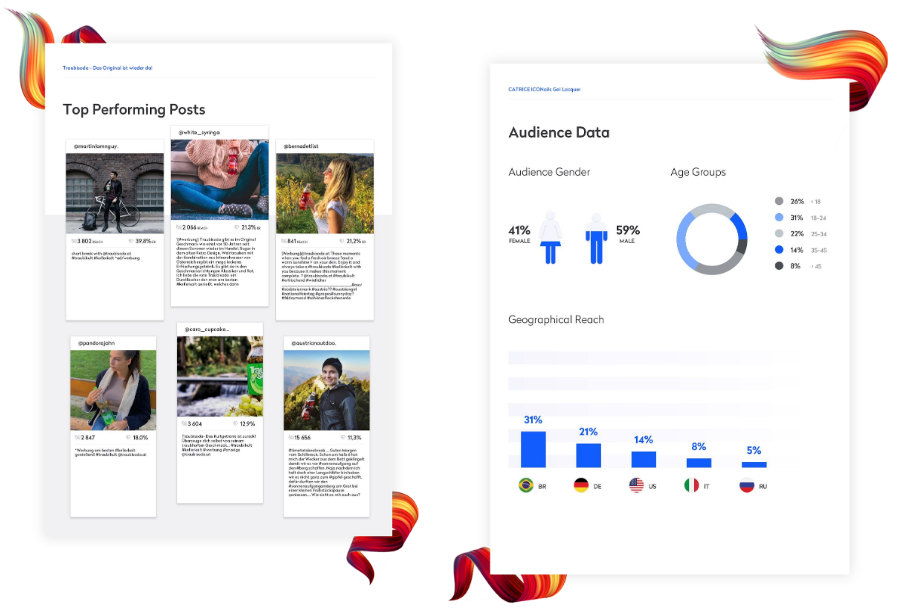
- Massive dashboard user role permission management tool
- Influencer whitelisting module created from scratch
- Completely new cost per content campaign type for influencers and brands
- indaHash Deal for e-commerce brands launched and running

- indaHash AI influencer research tool launched
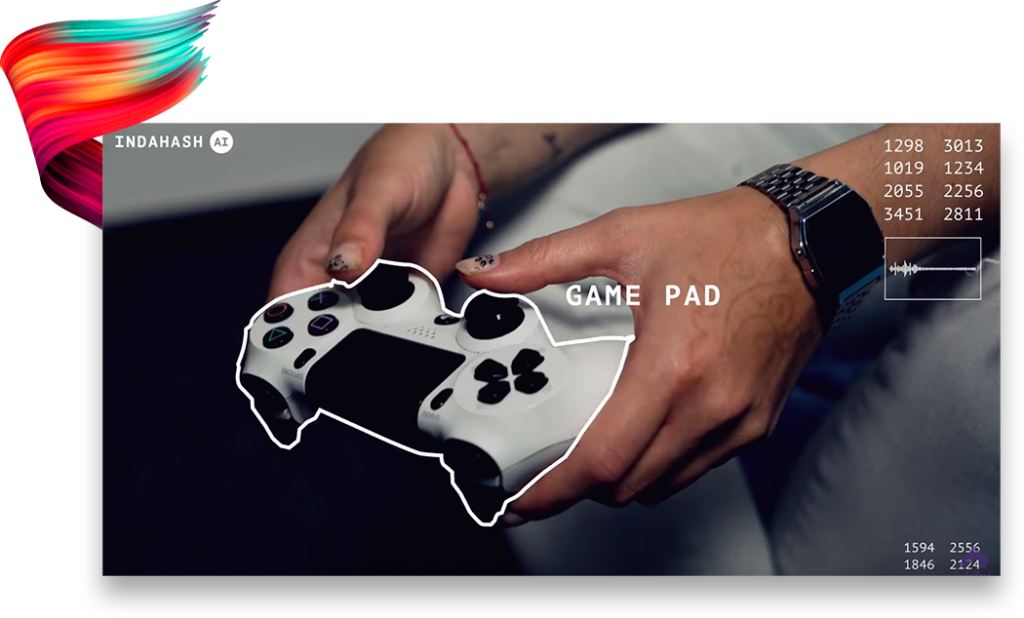
- Completely new indaHash landing page introduced
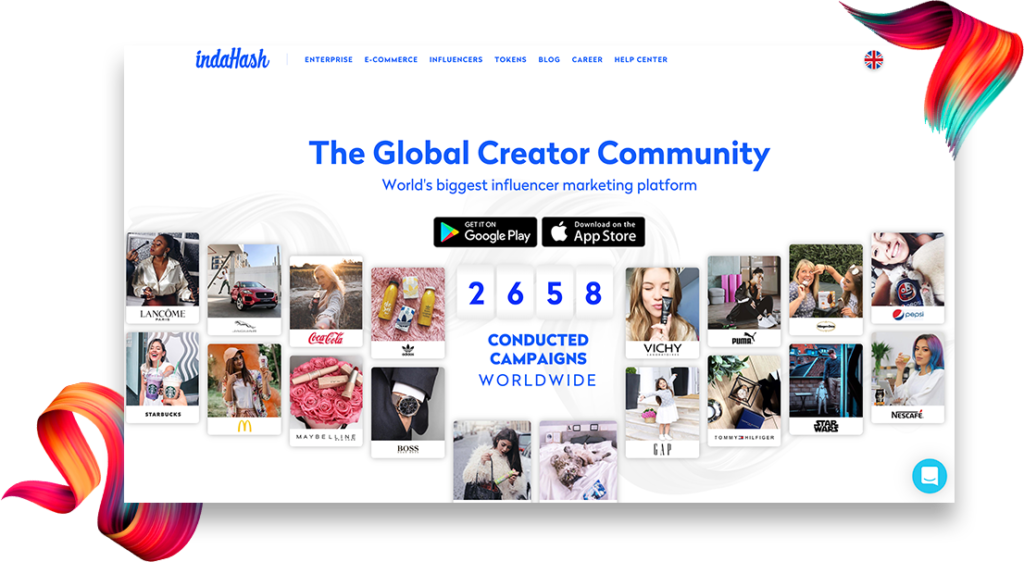
indaHash also provided broad research activities in order to support the influencer market with proper knowledge regarding the newest trends and novelties. We’ve deployed many market reports including:
1. indaHash Parenthood report (20 pages):
2. indaHash Oscars & Movie Trends report (8 pages):
3. indaHash Digital Matriarchy report (36 pages):

indaHash started its business at the end of 2015 as a technology platform, whose task was to automate the influencer-brand cooperation. The leitmotifs were running campaigns to which influencers could apply via a dedicated app, and the brands could accept their participation and reward them depending on the size and engagement of their social media profiles. We have created a set of tech tools that were targeted to improve both the process of campaign completion, moderation of content and the final settlements between the parties. We were one of the first companies in the world that decided to create a platform for the technological service of influencers, which were previously running completely manually.
The main group of clients at that time were the so-called media & digital agencies and PR companies. These entities have been operating on the market for several decades and their task is to buy media and dispose of brands’ marketing budgets in the best and most effective way possible. As it turned out in 2016, the purely technological (self-serve) and platform driven approach was too early for such a young market. Digital, PR, media agencies and clients did not want to carry out the campaigns themselves due to a lack of knowledge and competence. They expected a managed service approach in terms of research of influencers, campaign setup, content moderation, reporting and settlements. Therefore, indaHash had to introduce additional improvements and build an internal structure to implement the campaign through its own team, based on its own solutions. Over time marketers focused mostly on a great fit between brands and influencers which resulted in a whitelisting of influencers accounts that can join the campaign after prior approval. This process often includes a great amount of research and validation of audience data, giving information on which countries the followers of a given influencer come from and very specific targeting. Thanks to that we have implemented several targeting options, including an AI tool that helps us to meet clients’ expectations and find influencers who have posted appropriate content; for example, not only just beauty influencers but beauty influencers who have shown mascaras on their profiles, etc.
Along with the development of the entire industry, the competence of media, digital agencies and brands has also begun to grow. The development of industry requirements has led to what indaHash wanted to achieve already in 2015, that is, for the independent setup and implementation of campaigns by brands and agencies, by giving them the proper online tools and opted in qualitative influencers. In 2018/2019, with such a managed-service, that is, carrying out all campaign implementation processes on behalf of the brand, the agencies and clients started to build internal structures for independent implementation of campaigns (self-serve). indaHash, ahead of the evolution of the industry, was prepared for this self-serve model at the turn of 2015 and 2016, but had to wait through the period of maturing and experience gathered by market participants. Thanks to that time, indaHash has been able to build a great inventory and develop many specific features requested by clients. These years also gave us a very valuable experience in campaign management and helped us to grow our inventory to over 900k influencer registrations globally!
By carrying out activities in the vast majority of the managed-service model for clients, agencies and media houses, a large part (80%) of the functionalities that automate the process was produced in the company’s administrative dashboards. Customers used very simplified dashboards which were primarily designed to moderate content and influencers, as well as generate reports. Along with the growing awareness of clients in 2018, we started the process of functional migration from administrative dashboards (80% of features) to client dashboards. This process resulted in a thorough overhaul of the functionality that the company created in the years 2015-2017 and making them available in a comprehensible and user-friendly form for a non-technical customer who would have to deal with self-service tech.
Due to the above course of events, the indaHash company today has a unique situation and great opportunity to add a completely new revenue stream. So far we have mostly been a managed service company and right now we want to keep and develop our greatly managed service offering, but also add a new revenue stream from selling our software driven by indaHash tokens. According to research of our global inventory, encompassing over 80 markets combined with technology will give us a strong advantage over the competition. The key aspect is the technology created by indaHash over the years of 2015-2018 which was intensively used to run thousands of campaigns, and thus tested and improved in real life, matching the vision of the product to market requirements.
In addition, indaHash has been intensively working on scaling up its business and operations in foreign markets since 2016. We are the only company that operates in so many locations (campaigns were conducted in over 80 countries) and have prepared and localized technological solutions, translating the indaHash app to 9 languages. We want to keep and develop our current operations which also helps us keep a competitive advantage.
In 2017, indaHash, ahead of the entire industry, had taken another innovative step into the future. The company issued its own tokens for settlements with influencers and industry tokenization. Working with thousands of people (influencers) in multiple countries, we understood that fiat settlements in international cooperation are extremely expensive and ineffective in terms of time. Banking costs of transfers and the implementation were often a gigantic problem, especially for clients cooperating with people from distant countries and jurisdictions. Payment solutions based on Ethereum blockchain were a great solution for improving nearly all financial processes in the influencer marketing industry. In addition to that, indaHash wanted to create influencer based cryptocurrency which will be used to pay, by influencers, for discounted goods and services. Each influencer using IDH will be verified in terms of quality and only those with the highest standards will be able to participate in the system.
After the process of issuing tokens in December 2017 and implementing them to the indaHash application in settlements at the beginning of 2018, the cryptocurrency market suffered a serious crisis. A several-month drop in the value of Bitcoin and Ether brought even greater declines on the so-called altcoins, and thus indaHash Coin (IDH). The company faced a difficult decision – to what extent the integration of IDH and active encouragement of the crypto-settlements of influencers in such an unstable market environment may jeopardize the company’s development and lead to material losses of its users. On the basis of an in-depth analysis of the market situation, a decision was made to minimize intensive promotional activities of indaHash Coin until the values of the entire market stabilized, became less volatile and the downward trend stopped. These were the preventive decisions made to limit the risk on the influencers side and wait out the unfavorable conditions so that the crypto market could stabilize and strengthen. According to our analysis, the situation has changed and we’re ready to proceed with IDH token popularization.

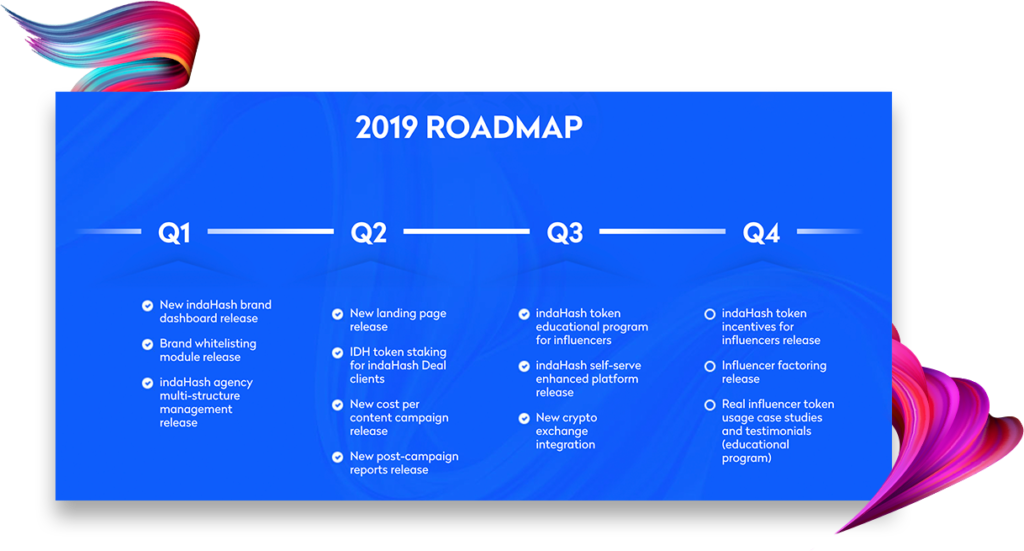
indaHash’s goal is to build a marketplace where brands and influencers can cooperate in a trustless way based on indaHash tokens. A crucial part here is to provide a proper level of transparency based on blockchain so brands and influencers will be able to comfortably work together in a safe way. In order to do that we need to roll-out a full self-serve technology for brands in order to give them a possibility to research, run and moderate campaigns on their own. We’ve started this process in 2018 (features progress was reported in our updates being released on a monthly basis) and our plan is to end this process in Q3 2019.
indaHash is planning a buy-back tokens program for influencer payments and incentive campaigns. We’re creating a system where every promotional token related action taken by the influencer will result in a certain IDH token amount allocation as a reward – planned for Q3/Q4 2019.
Our main goal by the end of the year is to have actual token popularization and educational programs to be started in order to accelerate token usage and transaction volume. As the global crypto market situation has improved significantly in 2019, we believe it’s the best time to convince influencers to use IDH coin.
We strongly believe that influencers factoring can be a big game changer in the industry. One of the biggest weak points of this space are payments from clients that, on average, are overdue and last approximately 60 days (so influencers have to wait a long time). Influencers are tired of waiting for their remuneration. We came up with a vision of implementing a new system to solve this problem. If an influencer recommends indaHash to his clients as an influencer campaign technology, we will pay them with indaHash Coin just after approval of his content so that they will not have to wait for money from the brand. This should help influencers, also support us to scale, and possibly motivate influencers to recommend indaHash to brands that haven’t used us yet.
On top of that we’re planning to create promotional campaigns both engaging our internal resources and actual influencers in promotional material creation. In 2019 we want testimonial videos to be published by influencers with step by step indaHash Coin usage process described; showing the simplicity and benefits of IDH coin.
In order to facilitate the path of adaptation, indaHash is currently working on additional listings on larger, user-friendly crypto exchanges. We realize the importance of a new listings and it’s one of our main priorities.
We are very excited about what is to come for this and next year and how it may change the influencer market and cryptocurrency popularization. The times were tough, but we’re still here working hard to make disruptive things together with the support of our great community! We will keep you informed by sending our monthly updates with all important things going on at indaHash.
Thank you!
indaHash Team




